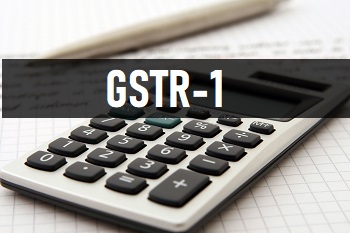GSTR-1 is a monthly or quarterly return that is filed by registered taxpayers in India under the Goods and Services Tax (GST) system. It contains details of all outward supplies or sales made by the taxpayer in a given tax period.
Taxpayers with a turnover of up to Rs. 1.5 crore can file GSTR-1 on a quarterly basis, while those with a turnover of more than Rs. 1.5 crore must file monthly.
GSTR-1 is used to furnish information regarding the total value of goods and services supplied by the taxpayer, the tax liability on such supplies, and the details of the recipients to whom the services or goods have been supplied.

The key points to remember for GSTR-1
- The Form GSTR-1 should be filed by all the registered taxpayers to fill outward supply details of business irrespective of whether the transaction was done or not in a month
- The outward supplies include supplies to an unregistered person, registered person, exempted and exports, received advances and non-GST supplies
- If your business receives invoices for services, you will fall under the category of input service distributor(ISD)
- If you import goods outside India or work to manage the business on behalf of NRI; you will fall under the category of a non-residence taxable person.
- The taxpayer is liable for collecting tax at source & deduct tax at source (TCS & TDS)
GSTR-1 must be filed by all taxpayers who are registered under GST, except those who are registered under the GST Composition Scheme. The due date for filing GSTR-1 depends on the turnover of the taxpayer.
Things needed to file GSTR-1
- A valid goods & services tax identification number (GSTIN number)
- The credentials (user-id & password) to sign in to the portal.
- Valid digital signature certificate, except if you can use e-sign the form.
- Adhaar number if you are using e-sign.
- Mobile number access, mentioned in your Adhaar card.
You can file the GSTR-1 form using the below available options:
- Online entry on the GST portal
- Uploading the invoice & other relevant forms of GSTR-1 data using Returns Offline Tool.
- Using the GST Suvidha Providers or third-party applications of Application Software Providers (ASPs)
Late payment charges for GSTR-1 are imposed on taxpayers who fail to file their returns within the prescribed due date. The late payment charges are levied at a fixed rate of 18% per annum on the tax liability that is unpaid or paid after the due date. Hence, it is better that taxpayers file their GSTR-1 returns on time to avoid any penalties or interest charges.







